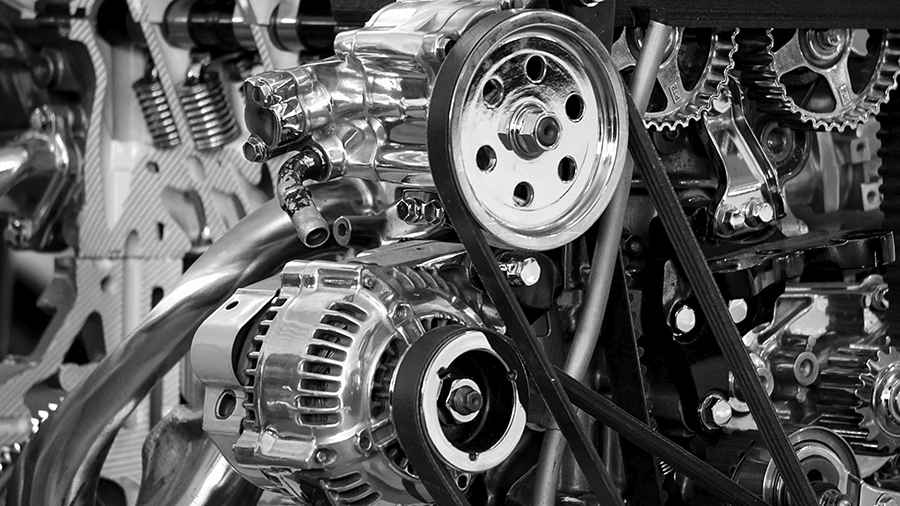Essential Car Parts Every Driver Should Know About
A car is a sophisticated tool, with a lot of components that work together to give a pleasant drive. However, almost all drivers know only the engine and brakes, the knowledge that each component has a purpose and importance can help drivers make better maintenance and repair decisions.

This article will help you find more here on ten important car parts that every driver ought to be aware of.
Transmission
The transmission is the most important system in transferring power from the engine to the wheels. The use of manual transmissions involves shifting gears manually with the help of a clutch and a gear stick that increases the driver’s control over the speed and performance of the vehicle. In automatic transmissions, gear shifts are done automatically, which makes driving smoother and more comfortable. CVT offers unlimited gear ratios that give the best fuel economy and performance.
Braking System
A brake system is necessary for the safe deceleration and stopping of the vehicles. When you step on the brake pedal, the brake fluid goes to the brake calipers that press the brake pads against the brake rotors thus creating friction and slowing down the wheels. Disc brakes with brake pads and rotors are the most popular type of brakes used in contemporary motor vehicles. They use brake shoes and drums and are less used but still found in some vehicles mostly at the rear. Brake system maintenance should be done regularly, including changing brake pads and brake fluids, to maintain optimal braking performance and safety.
Suspension System
The suspension system absorbs road shocks that makes the car ride smoother and handle better. It is made up of a variety of sections, such as shocks, struts, springs and control arms. Shocks and struts serve to regulate the effect of bumps and non-smooth road surfaces, while springs hold the vehicle’s weight and counteract other shocks. Control arms attach wheels to the frame, hence the allowance for movement and flexibility. Comfort, stability and wear are the main aspects of the proper suspension system maintenance.
Electrical System
The electrical system is a source of energy for critical elements, such as the battery, alternator and starter. The battery serves as an electric energy store that allows the engine to start and provides power for the operation of electrical systems when the engine is not running. The alternator produces electricity as long as the engine runs and charges the battery. The starter engages a flywheel and this action reflects to start of the engine. The electrical system also encompasses such functions as lights, sensors and entertainment systems. Maintenance of the electrical system, which involves frequent inspection and replacement of the battery, alternator and starter when necessary, is paramount in ensuring the operation of the vehicle.
Cooling System
The cooling system ensures that the engine is kept at the right temperature to avoid overheating. It is made up of many parts such as the radiator, water pump, thermostat and coolant. The radiator cools the engine coolant that is pumped through the engine by the water pump. The thermostat controls the circulation of the coolant to keep the engine at the best temperature. The cooling system, including the coolant flushes and radiator inspection, is very important for the long life and performance of the engine.
Fuel System
The fuel delivery system transports fuel from the fuel tank to the engine. It is comprised of five main parts, which are the fuel tank, fuel pump, fuel filter, fuel lines and fuel injectors. The fuel tank contains the fuel and the fuel pump takes it out of the tank and sends it to the engine. The fuel filter purifies the fuel before it reaches the engine, while the fuel injectors and deliver the fuel to the cylinders for combustion. The importance of frequent maintenance of the fuel system, which includes fuel filter replacement and injector cleaning, cannot be over-emphasized on the part of fuel economy and engine performance.
Exhaust System
The exhaust system controls and channels out the exhaust gases from the engine. This includes some parts which are the exhaust manifold, catalytic converter, muffler and exhaust pipe. The exhaust manifold gathers the exhaust gases from the cylinders of the engine and channels them towards the catalytic converter. The catalytic converter transforms hazardous pollutants in the exhaust gases into less harmful pollutants. The muffler reduces the level of noise created by the gases generated by the exhaust process before they leave the vehicle through the outlet of the exhaust pipe. The exhaust system should be properly maintained to meet the environmental regulations and to have the vehicle in good working order.
To sum up, all of these vital car elements are the objects that provide safety, convenience and reliability during driving. Knowing the operation of these components and the right way of their maintenance can help drivers extend their vehicle’s life and avoid expensive repairs. After attending to these essential parts, one can have confidence that their vehicle is at its best.